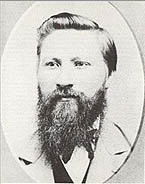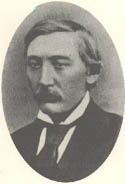Some History on Gimli Manitoba
SETTLERS (continued)
Under the provisional constitution, the New Iceland colony was named Vatnsthing (Lake Region) and was divided into four districts like the ancient quarter-section of 10th century Iceland: Vidinesbyggd (Willow Point district), Arnesbyggd (Arnes district), Flotsbyggd (River district), and Mikleyjarbyggd (Big Island district). Each district elected its own council of five members by popular vote, but the reeve and deputy reeve of each district council were chosen from within the council. A regional council of six members, called the Thingrad, administered the general affairs of the entire colony. Reeves from the four districts sat on the regional council; the President, Thingradsgtjori and Vice-president, Vara Thingradsgtjori were elected annually by all eligible voters of the colony. The Thingrad represented the colony in all relations with the Canadian government, summoned meetings of the colony council, kept a minute book for meeting, entered all public disagreements between district councils, the colony council made the decision or referred the matter to arbitration. An eligible voter had to be at least 21 years of age, a permanent resident of the colony and have an unblemished character.
This form of local government remained in effect until 1881, when the boundaries of Manitoba were extended and New Iceland finally became a part of the Province of Manitoba. Provisions were then made for the establishment of a municipal government in accordance with local municipal government practice elsewhere in Manitoba. Despite initial resistance, the municipal form of government was finally adopted by 1887, ending a system of local government unique to New Iceland.
Recovery from the epidemic and the rigors of adjusting to
a new land did not preclude the development of a rich cultural and social
life. Traditional evening pastimes of reading and reciting stories from
the Bible and the Icelandic sagas were actively enjoyed by the settlers.
In many a humble home 20 or more books could be found, a testimony to the
high value placed on literacy by the Icelanders. One enterprising man even
created a handwritten newspaper and travelled from house to house in the
colony to read it to others. The desire to preserve the Icelandic language
and rich heritage of Icelandic literature in North America was urgently
felt. Framfari, the first Icelandic newspaper in the colony, fulfilled this
role. Printed in a log cabin at Lundi (later Riverton), the first issue
of Framfari appeared on September 1, 1877. Four page issues were printed
three times monthly, but plagued with financial problems, the paper ceased
publication in 1880.
Dances, meetings and sporting events were held, the social highlight of the year being New Year's Eve with the "burning of the old year" celebrations. A huge pyre was erected on the ice and at the New Year's Eve gathering, one man appeared dressed as the old year in a long white beard of rabbit's fur, a white smock, and a tar-paper hat, while leaning on a cane and holding a bottle and glass which were both empty. After he bade farewell, the new year arrived from the east --- a young man appeared accompanied by twelve sprites, six dressed in white and six in green, ushering in an evening of merriment.
The suitability of the New Iceland reserve for settlement,
the question of opening to non-Icelandic settlers, and religion were issues
hotly debated in the community during the early years. Many of the colonists
desired the leadership of the Reverend Pall Thorlaksson, conservative leader
of the Icelanders in the United States. A member of the Norwegian Missouri
Lutheran Synod, which discouraged either pastor or congregation from doctrinal
re-interpretations, Pall Thorlaksson arrived in New Iceland in 1877. The
Reverend John Bjarnason of Minneapolis also accepted a call to organize
congregations in New Iceland from colonists who wished to secure the services
of an Icelandic Pastor not bound to any synod.

Reverend Jon Bjarnason

Pall Thorlaksson
Despite the controversies and natural disasters, such as the flood of 1880, the remaining settlers persevered. After the end of the North Dakota migration, the pace of settlement life began to quicken somewhat. A sawmill had been established on Hecla Island in 1878 and a store had been opened in Gimli. In 1879, the steamer Victoria, purchased by two Icelandic entrepreneurs, created desperately needed jobs in the floundering colony. While the settlement still had poor roads and dense forest, new immigrants from the homeland began to move onto the vacant lands. Gimli expanded from five houses in 1885 to over 40 in 1891. With the population rising to 1,557 in 1894, the settlers developed a fish trade with the United States Creameries were established at Gimli and Riverton. The railway reached Gimli in 1905, stimulating commerce and opening the area to summer cottagers.
The gradual expansion of settlement and new transportation links with other areas of Manitoba led the Icelandic settlers to become more involved in provincial affairs. They rallied to banners of the temperance and women's suffrage movements. Led by Margaret J. Benedictsson, the Icelandic Suffrage Society was formed in 1908, predating similar organizations in the rest of the province by a few years. The Icelandic Suffrage Society actively helped popularize the right to vote for women, with two suffrage petitions presented to the Manitoba Legislature in 1910.
In 1897, the New Iceland reserve was opened to settlement by any individual willing to homestead in the area. The first to come were Ukrainian pioneers, who began to homestead in the Pleasant Home district southwest of Gimli by June 1897. They were joined by Polish and Hungarian settlers soon afterwards. Schools, libraries, community centres and choirs organized by the new settlers appeared throughout the Interlake region. By 1917 the area had exchanged its exclusively Icelandic character for a wealth of different traditions and cultures.
Since the first Icelandic settlers landed at Willow Point on October 21, 1875, New Iceland had evolved from an expanse of wilderness to a settled, agricultural area of Manitoba. Despite the initial years of struggle and hardship the Icelandic pioneers had established their rich heritage in the new land. Today, two commemorative plaques, one in Riverton, the other in Gimli, pay tribute to the perseverance of these early pioneers and their unique settlement, "New Iceland".




